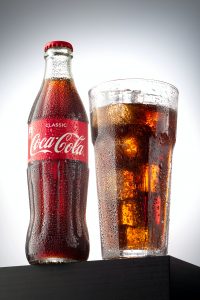Popularity is inherently a good thing for brands. You want everyone to know the name of your product, right? What if too much popularity was a bad thing? As it turns out, too much popularity can kill your trademark rights, in a process called genericide.
Let’s first dive deeper into what a trademark is. Then, we’ll discuss how some brands have been destroyed by their own popularity.
What is a trademark? Why do I want one?
A trademark is any word, symbol or device that is used in commerce on a product or service that can distinguish the product or service from others. The owner of a trademark has the right to prevent others from using the same or similar mark on goods or services if doing so would likely be confusing to consumers.
The distinguishing component in a mark is often referred to as the trademark’s “distinctiveness.” There are four levels of distinctiveness (listed weakest to strongest):
- Generic: the common name of the product or service; ex. “bicycle” for the vehicles with two wheels, a seat, and handlebars
- Descriptive: describes a component of the product or service and requires a secondary meaning; ex. “creamy” for yogurt
- Secondary meaning: the additional meaning acquired by a non-distinct mark through commercial use of the mark
- Suggestive: suggests some quality of the goods or services, but doesn’t outright state that quality; ex. COPPERTONE® for sun-tanning products
- Arbitrary or Fanciful: arbitrary marks are words that have no association with the underlying goods or services, e.g., Apple® for computers; and fanciful marks are invented words; e.g., Pepsi® for soft drinks
 A generic term is one that tells the consumer exactly what it is. Under no circumstances can a generic word become a trademark. It would be unfair for one entity to have exclusive market control over a word that can’t be replaced with another to describe the thing. Imagine using a different word for a flip phone– “clamshell-designed phone-device”? Absolutely not!
A generic term is one that tells the consumer exactly what it is. Under no circumstances can a generic word become a trademark. It would be unfair for one entity to have exclusive market control over a word that can’t be replaced with another to describe the thing. Imagine using a different word for a flip phone– “clamshell-designed phone-device”? Absolutely not!
Flip phone was once a registered descriptive mark (“flip phone” is descriptive of a handheld phone that must be flipped open to function) owned by Motorola that was “killed” through genericide. Trademark death, or genericide, occurs when the brand name, or trademark, of a product with any level of distinctiveness becomes so famous and ubiquitous that the public uses the name for the product rather than its specific source. That’s what happened with Motorola’s mark. It no longer refers to only Motorola’s phone, but all phones with the characteristic “flip” functionality.
Genericide Graveyard
Which other trademarks have taken the “fateful step” in becoming generic? Below, are trademarks that became the names of products and have been buried in the trademark graveyard – aka, the dictionary!
Fanciful → Generic
Oh, the moving staircase? Yes! Haughton Elevator Co. v. Seeberger found that “escalator” is “recognized by the general public as the name for a moving stairway” and not the original source. Haughton Elevator Company dropped the ball by using “escalator” to describe the product, instead of an indication of the brand name with the product name, i.e. moving stairway.
Descriptive → Generic
Kettle-cooking was once known as batch-cooking, or a means for large scale production and distribution. In fact, kettle cooking is an intricate process requiring potatoes to be sliced in small batches and stirred and cooked by hand in the fryers. In the 1980s and 1990s, many companies made potato chips using a kettle-cooking process that included “kettle” in their product names. Classic Foods Inc. vs. Kettle Foods Inc. found evidence that “kettle” and “kettle chips” had been used in many newspapers and magazines, in reference to the chip, specifically the cooking process. This meant that “kettle” was so descriptive of this type of potato chip to the extent that it became incapable, alone, of telling the customer the brand origin. Kettle is considered generic. So that’s why we see many products that use “kettle” in their name.
ESCALATOR and KETTLE CHIPS, may their marks RIP.
The Battle Against Death
Some trademark owners were able to identify the impending doom for their mark, as popularity began to rise, and were successful in keeping their mark valid. There are various generic (*pun intended*) precautions known to prevent genericide. Federally registered marks can, and should, add the ® symbol with their mark. Unregistered marks can add “TM” with their mark. Even more important, trademark owners should use their mark in conjunction with another term (see the examples below). Ultimately, trademark owners should remain vigilant to prevent generic use of their marks by consumers, media, or competitors.
BAND-AID
Band-Aid® is a mark for adhesive bandages. But, the mark, is often used by the public to describe any bandage, regardless of the brand. The jingle for Band-Aid® is “I am stuck on Band-Aid® brand ‘cause Band-Aid’s® stuck on me.” Besides the catchy melody and cute children singing, this advertisement is genius! Adding “brand” after Band-Aid®, Johnson & Johnson effectively trains the consumer away from making its trademark become generic. Also, if the jingle is stuck in your head for the rest of the day, sorry, but me too.
VELCRO
VELCRO® is a mark for a type of hook-and-loop fastener. Fearing loss of their VELCRO® mark, the company’s legal counsel tested the waters of a new career in acting when they published “Don’t Say ‘Velcro’ Video.” The video advises consumers not to use “velcro” as a noun or a verb, e.g. velcro shoes. Again, not only is the video incredibly entertaining, but it also educates consumers to help protect the integrity of the brand and their trademark rights.
COKE
 COKE® is a mark for a specific flavor of a sparkling beverage owned by Coca-Cola. In a rather more aggressive approach, Coca-Cola has sent out undercover employees to uncover retailers substituting, without telling the consumer, another cola beverage when the consumer orders “Coca-Cola” or “Coke.” If Coca-Cola finds retailers are continuously doing this, Coca-Cola will bring a trademark-infringement suit. Whether or not this is “good practice” is for another blog post.
COKE® is a mark for a specific flavor of a sparkling beverage owned by Coca-Cola. In a rather more aggressive approach, Coca-Cola has sent out undercover employees to uncover retailers substituting, without telling the consumer, another cola beverage when the consumer orders “Coca-Cola” or “Coke.” If Coca-Cola finds retailers are continuously doing this, Coca-Cola will bring a trademark-infringement suit. Whether or not this is “good practice” is for another blog post.
Who’s in trouble?
Now that we have an idea of what genericide is and what it looks like, let’s look at some trademarks that are still valid, but are approaching the line of being generic. Plus, here are a few suggestions on how to resist genericide.
POST-IT®, HULA HOOP®, and ZIPLOC® were three trademarks that came to my mind that I often use to describe the actual product. Good practice for these marks includes referring to each as POST-IT® notes and not “post-its”; HULA HOOP® playing and not “hula hooping”; and ZIPLOC® bags and not “ziplocs.”
Finally, there was recently an excellent example of active policing and consumer protection shown by LEGO. In 2021, Seth Meyers made a joke on his show “Late Night with Seth Meyers,” referring to a well-known brand of plastic building bricks as “Legos.” The public immediately came after Seth Meyers, as they might, to explain Lego is plural for Lego, to which Seth Meyers said he could not conform to. The final response (and the best part of this story in the fight against genericide) was by Lego saying, “the plural is not ‘LEGOS.” It’s not even ‘LEGO.’ It’s actually ‘LEGO BRICKS!’” And if you’ve learned anything from this post, you KNOW The LEGO Group recruited their best trademark attorneys in crafting this tweet. And now you could have done so too!

Sophia Gunzburg
Associate Blogger
Loyola University Chicago School of Law, J.D. 2024
